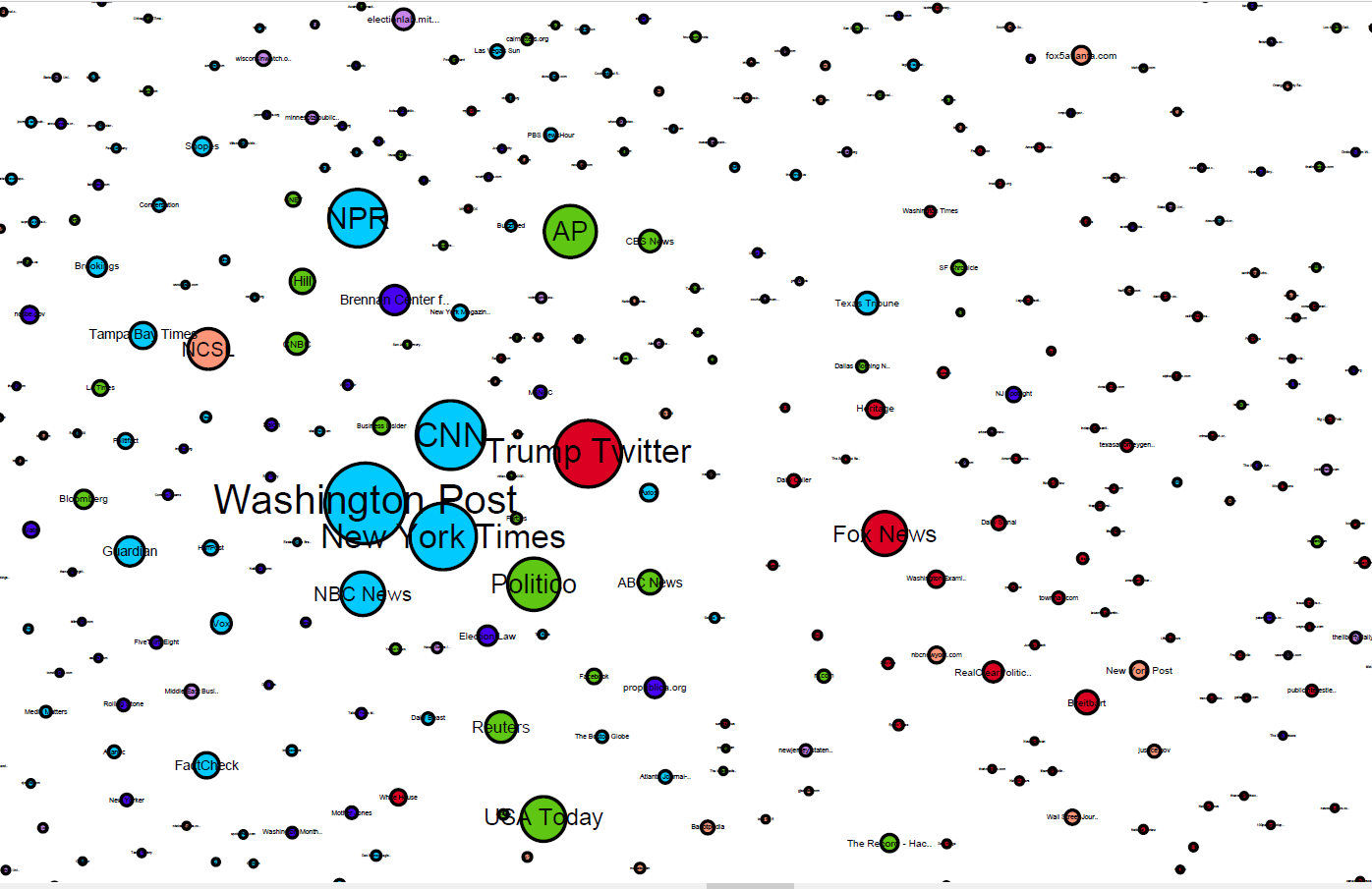Benkler’s team just published its study, which examines the president’s disinformation campaign against mail-in votes and details the methods–and people–he’s using to accomplish his goals. The findings found that some of the biggest names in American mass media and the political elite are primarily responsible, and that social media plays only a secondary role. The findings run contrary to the popular idea that it’s foreign troll factories doing the worst disinformation dirty work.
The study examined 55,000 media stories, 5 million tweets, and 75,000 Facebook posts. The conclusion, echoing their research from 2015 to 2018, is that Donald Trump and Fox News are the key players in this crucial disinformation campaign, not Russian trolls. The researchers mapped the campaign out, showing a clear and recurring culprit: Trump, whether on TV or Twitter or by close proxy.

There’s been a lot of alarm over Russian interference and clickbait factories on social media, says Benkler, but “in 2016 and today, what we see is that mass media is much more important.”
The American press amplifies this dramatically because outlets cannot resist giving attention to the White House. Calling his actions a disinformation campaign would be profoundly difficult for some journalists who are desperate to project balance as if it is equal to fairness.
But this has real consequences. Mail-in voting expands access to an election in the middle of a national health crisis, and lies are being used as justification to undercut or eliminate this access–a tactic clearly at play in Texas and other states.
There is a way forward, however. The research argues that the “primary cure” is for these media outlets to more aggressively police the president’s disinformation.
While many Americans are set in their beliefs on election fraud, there is still a substantial group of persuadables, says Benkler. They are unsure of the truth about election fraud, they watch network news, and they read local papers that aggregate journalism from outlets like the Associated Press.
That means “the only meaningful players are the news editors and the journalists at those outlets most often used for political news by the least attentive, least politically engaged people in society,” Benkler says.
That includes tackling the question of the president’s misinformation clearly and directly, and avoiding false balance. Even the New York Times, whose readers are well informed on the reality of voter fraud, sometimes publishes credulous and noncritical journalism on this. One recent story about Texas shutting down ballot drop-off sites, for example, was headlined “Citing security, Texas governor limits counties to one spot each for in-person ballot drop-offs,” giving credence to the idea. Not until the seventh paragraph does the story mention, as a brief aside, that there is absolutely no evidence that mail-in voting causes fraud.


